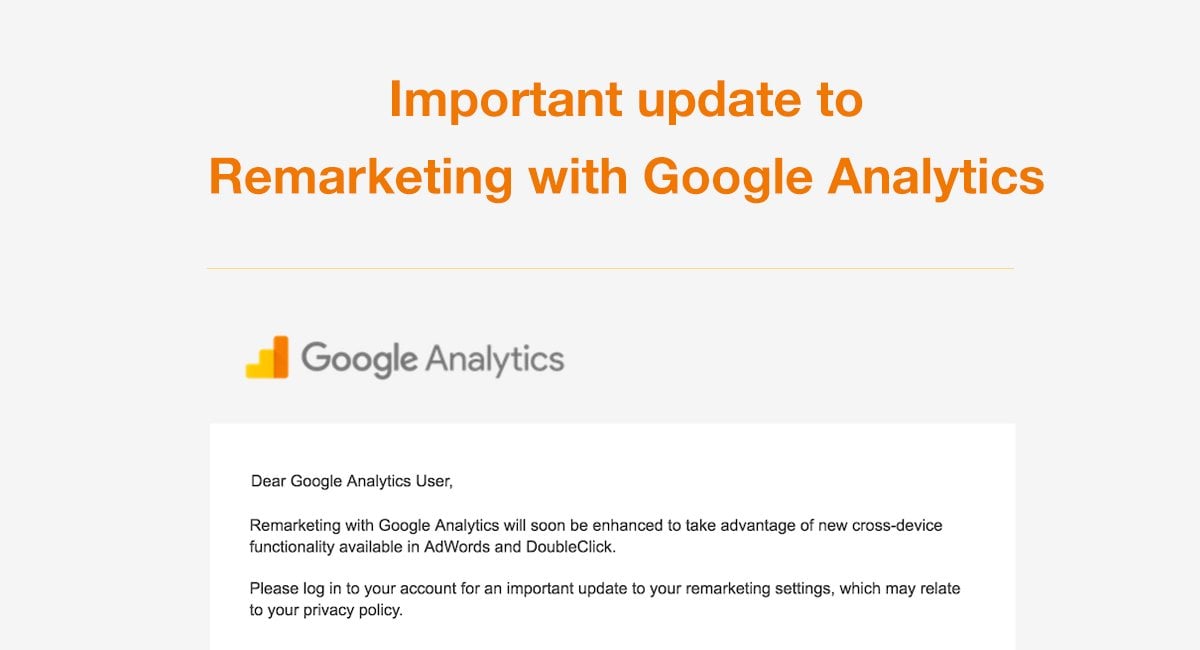Efficient Methods for Remarketing in Google Analytics
In the world of electronic advertising, the realm of remarketing in Google Analytics stands as a critical tool for organizations intending to boost their online presence and conversion rates. With tactical target market division, tailored remarketing listings, and engaging advertisement creatives, organizations can craft tailored projects that resonate with their target market. Nonetheless, real success hinges on the capability to constantly fine-tune and optimize these techniques based upon efficiency metrics and data insights. By discovering the subtleties of vibrant remarketing and leveraging innovative monitoring tools, businesses can open the complete possibility of their remarketing initiatives, resulting in increased brand name exposure and customer involvement.
Target Market Division
Utilizing audience division is an essential strategy in optimizing the performance of remarketing campaigns within Google Analytics. By splitting your target market into distinct groups based on their habits, demographics, or rate of interests, you can tailor your advertising messages to be extra appealing and pertinent. This strategy allows you to deliver personalized ads to details sectors, increasing the likelihood of conversion.

Moreover, audience segmentation aids you recognize the varying requirements and choices of various client groups, enabling you to craft more compelling advertisement creatives and offers. This targeted technique not only enhances the efficiency of your remarketing efforts however likewise improves total campaign efficiency.
Setting Up Remarketing Listings
To properly carry out remarketing methods in Google Analytics, the preliminary step involves developing targeted remarketing lists based upon certain audience interactions. Establishing remarketing checklists allows marketing professionals to section their internet site site visitors into various classifications based on their behavior, such as pages checked out, products looked for, or activities tackled the site. By specifying these segments, marketing experts can then produce individualized and pertinent ads that target these specific teams, increasing the chance of conversion.
Remarketing listings can be set up utilizing different standards such as page gos to, period of check out, details goal conclusions, and even specific occasions triggered on the web site. This degree of personalization enables marketing professionals to customize their ads to match the interests and choices of each segmented target market, leading to higher involvement and conversion prices.
Furthermore, remarketing listings can additionally be created based on data imported from various other resources like CRM systems, permitting a lot more exact targeting. By establishing up these targeted remarketing lists, marketing professionals can properly reach out to potential consumers who have actually already shown interest in their services or products, maximizing the impact of their remarketing projects.
Developing Compelling Ad Creatives
After segmenting website visitors into targeted remarketing lists based on details audience interactions, the next vital action is to craft engaging ad creatives that resonate with each segmented team's choices and rate of interests. The efficiency of remarketing campaigns greatly counts on the capacity of these ad creatives to capture the focus of the audience and drive them to take the wanted activity.
To produce compelling ad creatives, it is necessary to recognize the one-of-a-kind qualities their explanation of each fractional team (What Is “Remarketing” In Google Analytics?). Tailoring the messaging, visuals, and supplies to line up with the interests and preferences of the audience can significantly increase the opportunities of conversion. Making use of dynamic advertisements that automatically adjust content based upon the customer's habits can also enhance the personalization of the ad experience

Monitoring Efficiency and Optimization
Effective tracking of project performance and constant optimization are vital aspects of successful remarketing approaches in Google Analytics. To guarantee the effectiveness of remarketing campaigns, marketing professionals should frequently track vital performance metrics such as click-through prices, conversion rates, and return on advertisement spend. By keeping an eye on these metrics, marketers can gain beneficial insights into the efficiency of their campaigns and recognize areas for enhancement.
In Google Analytics, marketing experts can leverage devices like conversion tracking and audience division to analyze the efficiency of their remarketing campaigns. Conversion monitoring allows online marketers to track certain actions that customers take after clicking a remarketing ad, offering useful information on the efficiency of the campaign in driving preferred end results. Audience segmentation, on the other hand, allows marketing professionals to separate their audience into various segments based on different standards such as demographics, actions, and rate of interests, enabling more targeted and customized remarketing efforts.
Continual optimization is necessary for taking full advantage of the influence of remarketing projects. Marketers should use A/B screening to experiment with different ad creatives, his explanation messaging, and targeting methods to determine one of the most efficient strategies. By frequently examining project efficiency information and making data-driven optimizations, marketing professionals can make sure that their remarketing projects are attaining the wanted outcomes and driving conversions properly.
Leveraging Dynamic Remarketing
Making use of dynamic remarketing can substantially enhance the relevance and impact of targeted advertisements in Google Analytics. This advanced strategy allows advertisers to reveal customized ads to users who have actually previously seen their internet site or utilized their mobile application. By dynamically displaying service or products that the individuals have revealed passion in, vibrant remarketing assists to keep the brand name fresh in their minds and motivates them to return to finish a purchase.

Additionally, dynamic remarketing campaigns can be automated and maximized in real-time based upon efficiency data, making sure that the advertisements remain effective and appropriate. By leveraging vibrant remarketing in Google Analytics, marketers can develop extra impactful and targeted marketing campaign that reverberate with their audience and drive outcomes.
Conclusion
To conclude, reliable remarketing techniques in Google Analytics involve target market segmentation, targeted remarketing checklists, compelling advertisement creatives, efficiency tracking, and vibrant remarketing. By focusing on tailored advertisements, information analysis, and constant optimization, services can raise conversion prices and drive engagement efficiently. Leveraging tools like conversion tracking makes sure that advertisements continue to be relevant and personalized, bring about overall success in remarketing initiatives.
Through critical target market segmentation, customized remarketing checklists, and interesting advertisement creatives, businesses can craft tailored campaigns that resonate with their target audience. Using dynamic ads that immediately change material based on the user's actions can likewise improve the customization of the advertisement experience.
Conversion tracking allows online marketers to track details activities that Our site users take after clicking on a remarketing advertisement, giving important data on the effectiveness of the project in driving preferred outcomes.Utilizing vibrant remarketing can dramatically improve the relevance and influence of targeted ads in Google Analytics - What Is “Remarketing” In Google Analytics?.In conclusion, effective remarketing strategies in Google Analytics entail audience division, targeted remarketing checklists, engaging ad creatives, efficiency monitoring, and dynamic remarketing